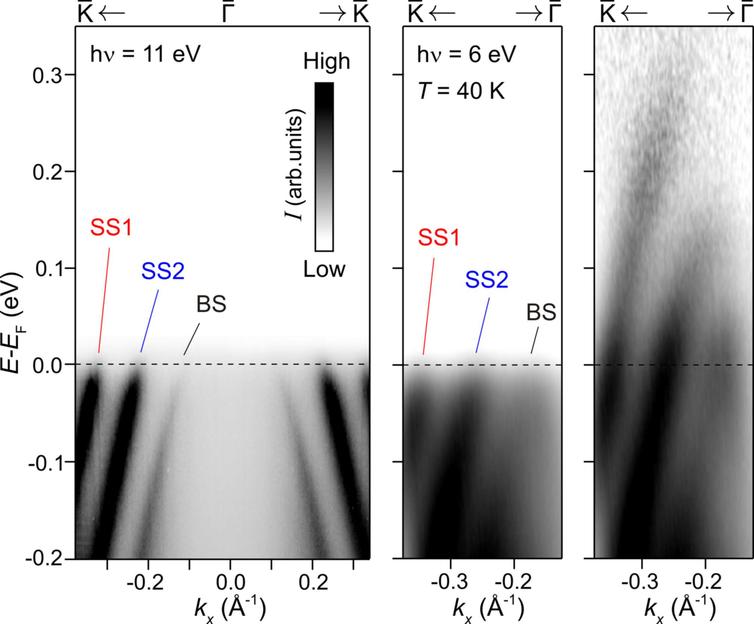Due to its gigantic Rashba effect, germanium telluride (GeTe) is considered a good candidate for use in spintronic devices. Now a team at HZB has discovered another fascinating phenomenon in GeTe. To do this, the researchers examined the electronic response to thermal excitation of the samples. Surprisingly, the relaxation that followed was quite different from that of conventional metalloids. By specifically controlling details of the electronic structure, new functionalities could be developed in this class of materials.

Right: Corresponding out-of-equilibrium dispersions after excitation by the heat pulse.
Over the past few decades, the complexity of silicon-based technologies has increased exponentially, driven by the growing demand for increasingly powerful devices. However, the silicon age is coming to an end. With increasing miniaturization, undesired quantum effects and heat losses are becoming an increasing obstacle. Further advances will require new materials that take advantage of quantum effects rather than avoiding them. Spintronic components, which use the spins of the electrons and not their charge, promise more energy-efficient components with significantly improved switching times and completely new functions.
Spin-orbit coupling as a prerequisite
Candidates for spintronic devices are semiconductor materials in which the spins are coupled to the orbital motion of the electrons. This so-called Rashba effect occurs in a number of non-magnetic semiconductors and semi-metallic compounds and makes it possible, among other things, to manipulate the spins in the material using an electric field. Germanium telluride (GeTe) exhibits one of the largest Rashba effects observed in semiconductors.
Heat pulse, then analysis at BESSY II
So far, however, GeTe has only been studied in thermal equilibrium. Now a team led by HZB physicist Jaime-Sánchez-Barriga has for the first time specifically accessed a non-equilibrium state in GeTe samples at BESSY II and examined in detail how the equilibrium in the material is restored within billionths of a second (10 -12 seconds). . In doing so, the physicists encountered a new and unexpected phenomenon.
First, the sample was excited with an infrared pulse and then measured with high time resolution using angle-resolved photoemission spectroscopy (tr-ARPES). "For the first time we were able to observe and characterize all phases of excitation, thermalization and relaxation on ultra-short timescales," says Sánchez-Barriga.
Unexpected phenomenon
The most important result: "The data show that the thermal equilibrium between the electron system and the crystal lattice is restored in a highly unconventional and counterintuitive way," explains one of the lead authors, Oliver Clark.
In simple metallic systems, thermal equilibrium is primarily established by the interaction between electrons and between electrons and the lattice vibrations in the crystal (phonons). This process slows down more and more as temperatures drop. In the case of germanium telluride, however, the physicists observed the opposite behavior: the lower the lattice temperature of the sample, the faster thermal equilibrium is established after excitation with the heat pulse. "That was very surprising," says Sánchez-Barriga.
Calculations help with interpretation
Using theoretical calculations as part of the Boltzmann approach, performed by a team from Nanyang Technical University, they were able to interpret the underlying microscopic processes and distinguish three different thermalization processes: interactions between electrons within the same band, in different bands, and electrons with phonons.
New functionalities conceivable
It seems that the interaction between electrons dominates the dynamics and becomes significantly faster with decreasing lattice temperature. "This can be explained by the influence of the Rashba splitting on the strength of the fundamental electronic interactions. This behavior is applicable to all Rashba semiconductors," says Sánchez-Barriga: "The present results are important for future applications of Rashba semiconductors and their excitations in ultrafast spintronics."







